HIV Surveillance Report — 2020 (Volume 33)

Diagnoses of HIV Infection in the United States and Dependent Areas 2020

Data in the HIV Surveillance Report may be used to monitor progress toward U.S. national goals outlined in Healthy People 2030, the National HIV/AIDS Strategy, and the Ending the HIV Epidemic in the U.S. (EHE) initiative. Data are presented for diagnoses of HIV infection reported to CDC through December 2021.
COVID-19 Pandemic Impact

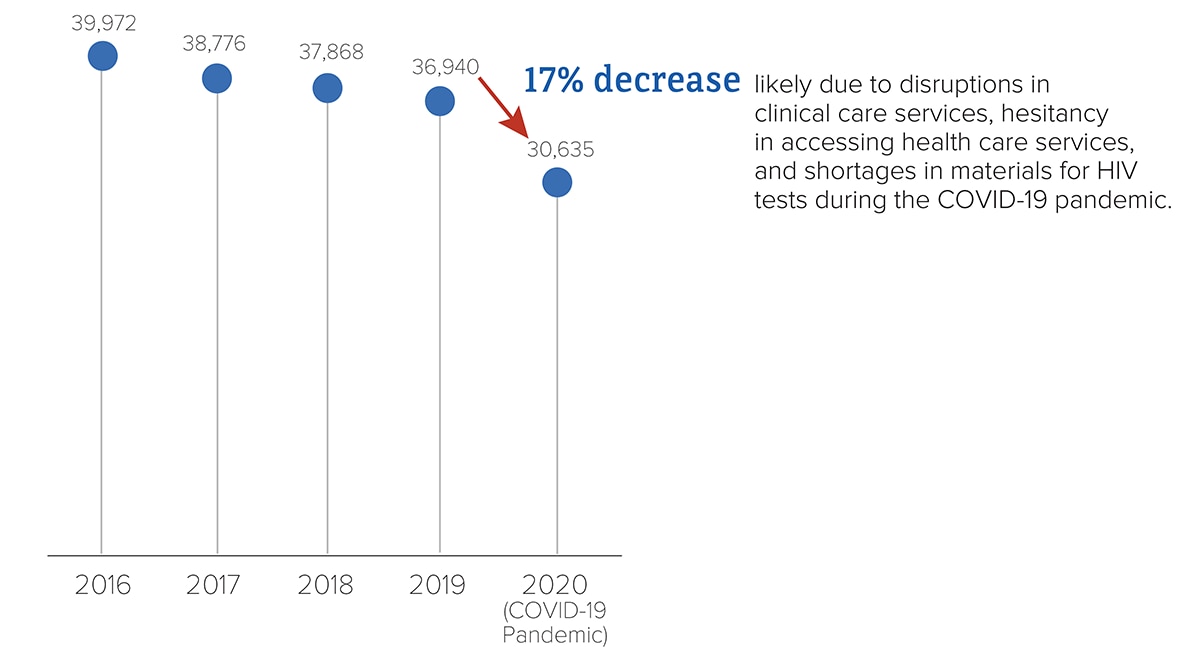
Data for 2020 should be interpreted with caution due to the impact of the COVID-19 pandemic. For more information, view the report commentary.
* Among people aged 13 and older.
Source: CDC. Diagnoses of HIV infection in the United States and dependent areas, 2020. HIV Surveillance Report 2021;33.

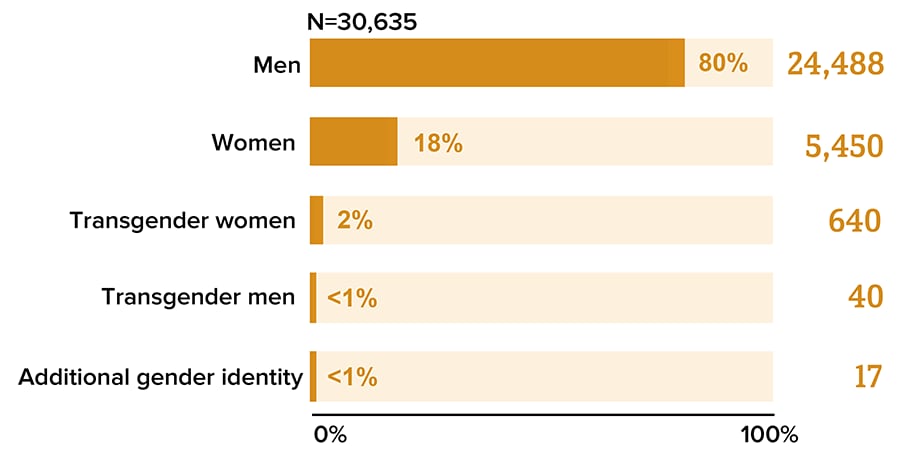
Data for 2020 should be interpreted with caution due to the impact of the COVID-19 pandemic. For more information, view the report commentary.
* Among people aged 13 and older.
Source: CDC. Diagnoses of HIV infection in the United States and dependent areas, 2020. HIV Surveillance Report 2021;33.

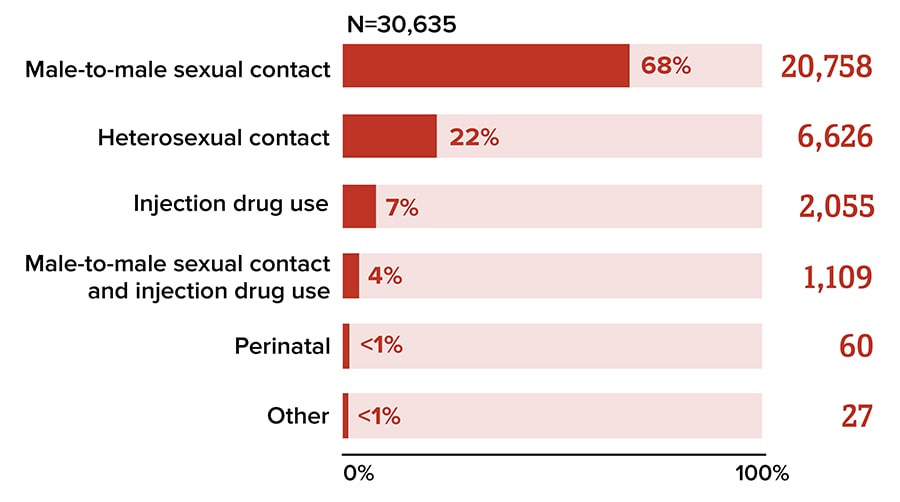
Data for 2020 should be interpreted with caution due to the impact of the COVID-19 pandemic. For more information, view the report commentary.
* Among people aged 13 and older.
† Transmission category is classified based on a hierarchy of risk factors most likely responsible for HIV transmission. Classification is determined based on the person’s sex assigned at birth. Data have been statistically adjusted to account for missing transmission category.
Source: CDC. Diagnoses of HIV infection in the United States and dependent areas, 2020. HIV Surveillance Report 2021;33.
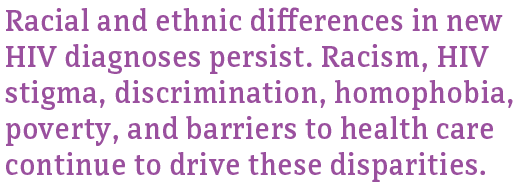
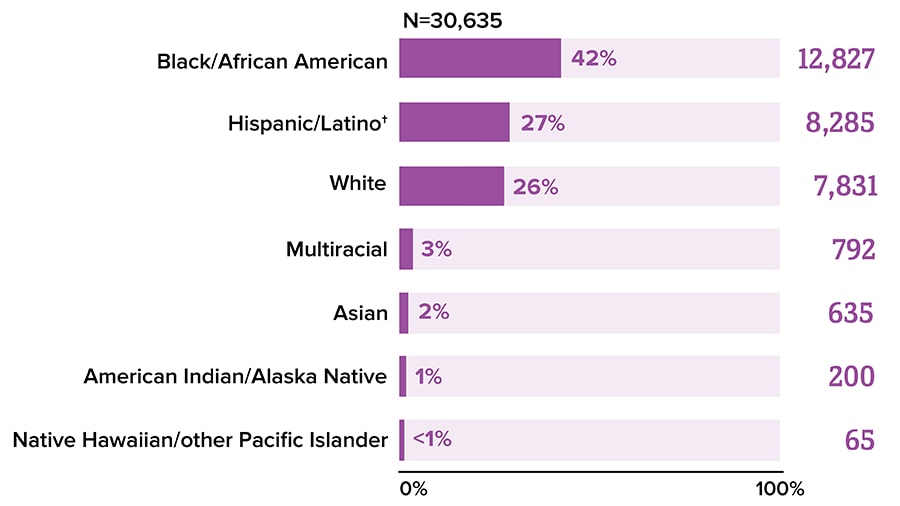
Data for 2020 should be interpreted with caution due to the impact of the COVID-19 pandemic. For more information, view the report commentary.
* Among people aged 13 and older.
† Hispanic/Latino people can be of any race.
Source: CDC. Diagnoses of HIV infection in the United States and dependent areas, 2020. HIV Surveillance Report 2021;33.

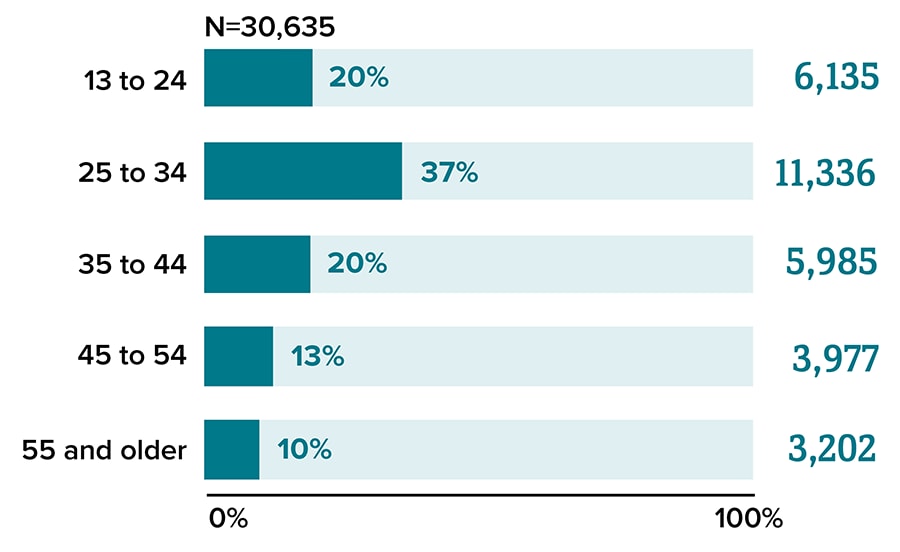
Data for 2020 should be interpreted with caution due to the impact of the COVID-19 pandemic. For more information, view the report commentary.
Source: CDC. Diagnoses of HIV infection in the United States and dependent areas, 2020. HIV Surveillance Report 2021;33.
The HIV Surveillance Report is published annually by the Division of HIV Prevention, National Center for HIV, Viral Hepatitis, STD, and TB Prevention, Centers for Disease Control and Prevention (CDC), U.S. Department of Health and Human Services, Atlanta, Georgia.
Data are presented for diagnoses of HIV infection reported to CDC through December 2021.
The HIV Surveillance Report is not copyrighted and may be used and reproduced without permission. Citation of the source is, however, appreciated.
Suggested Citation
Centers for Disease Control and Prevention. HIV Surveillance Report, 2020; vol. 33. https://www.cdc.gov/hiv/library/reports/hiv-surveillance.html. Published May 2022. Accessed [date].
Confidential Information, Referrals, and Educational Material on HIV Infection
CDC-INFO
- 1-800-232-4636 (in English, en Español)
- 1-888-232-6348 (TTY)
- http://wwwn.cdc.gov/dcs/ContactUs/Form
Acknowledgments
This report was prepared by the following CDC staff and contractors of the Division of HIV Prevention, National Center for HIV, Viral Hepatitis, STD, and TB Prevention, CDC: André Dailey, Zanetta Gant, Jianmin Li, Shruthi Nagaraju, Faith Elenwa, Sonia Singh, Joseph E. Logan, Anna Satcher Johnson, Shacara Johnson Lyons, Michael Friend (editing and desktop publishing), Azfar Siddiqi (science review), and the Chief of the HIV Surveillance Branch, Angela L. Hernandez.
The following are acknowledged for their contributions to the report (including graphics) and report website: Prevention Communications Branch (Web and Consumer Services Team); the Division of Communication Services, Mikaelyn Benson, Deirdre Launt, Meredith Newlove, Cesar Rivera (Design Team).
Publication of this report would not have been possible without the contributions of the state and territorial health departments and the HIV surveillance programs that provided surveillance data to CDC.